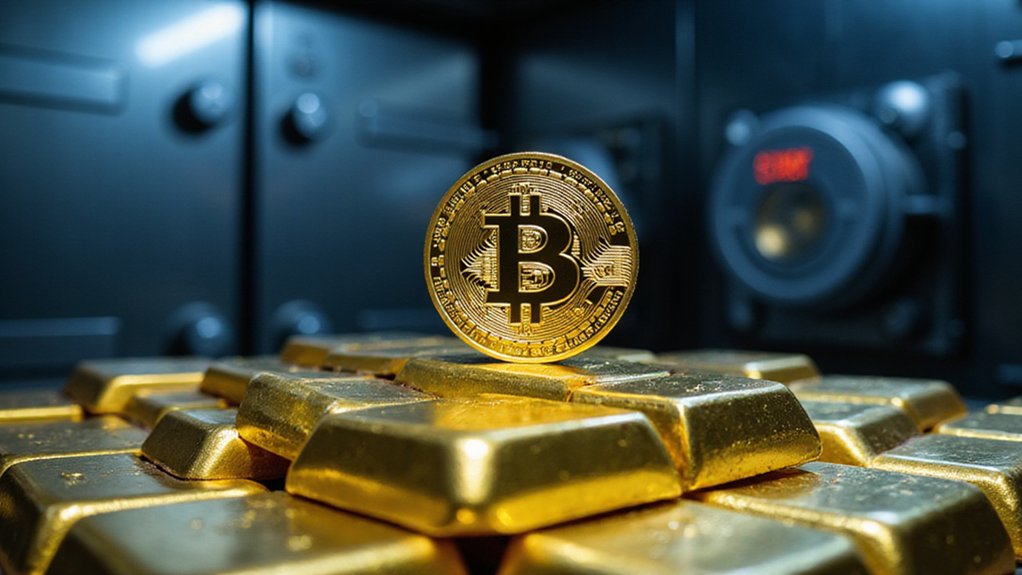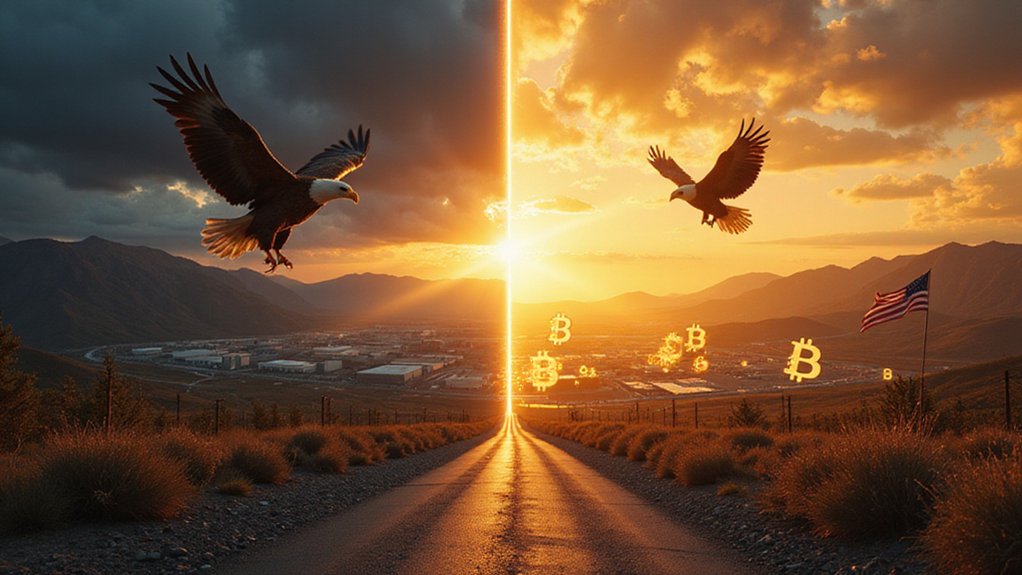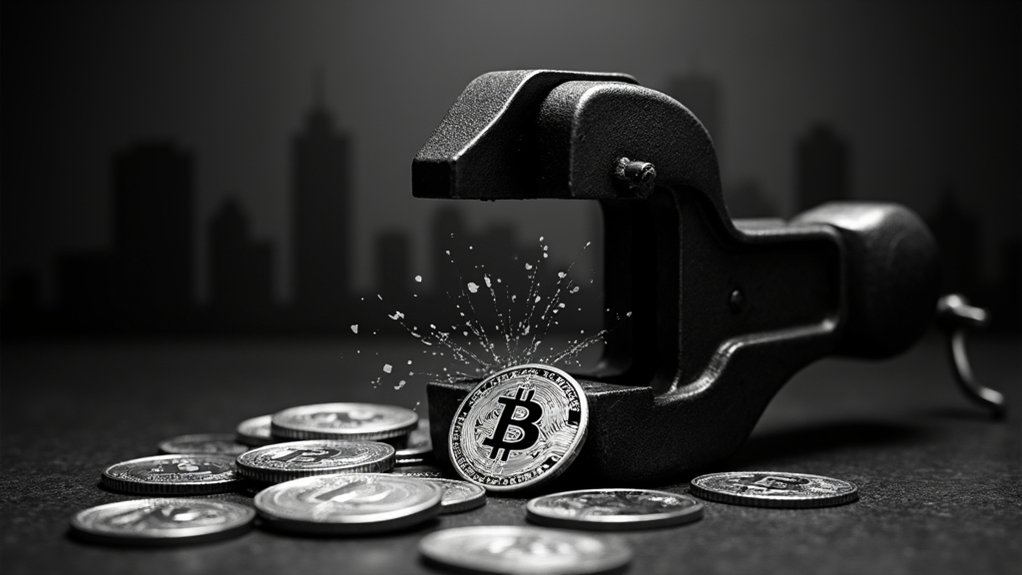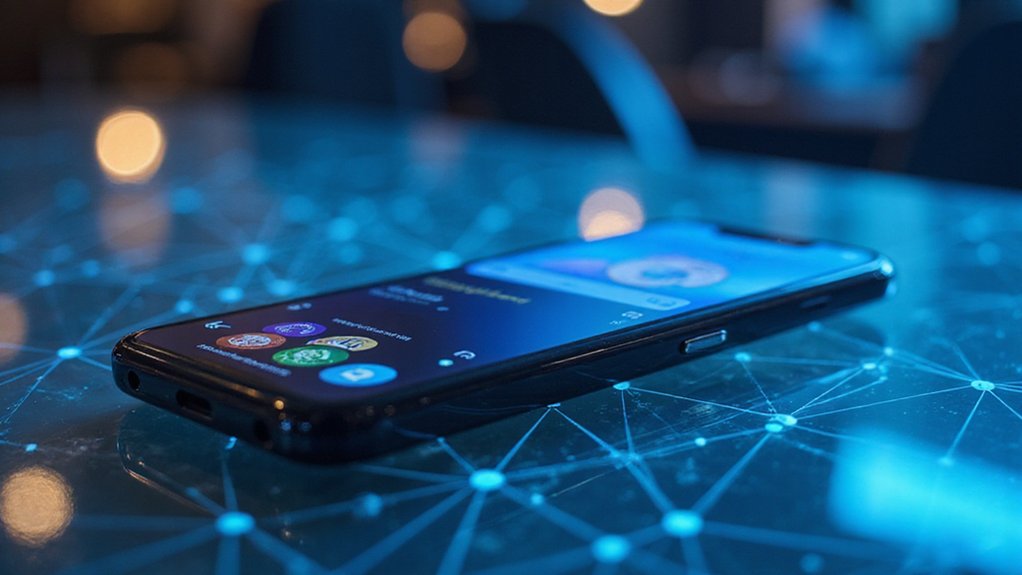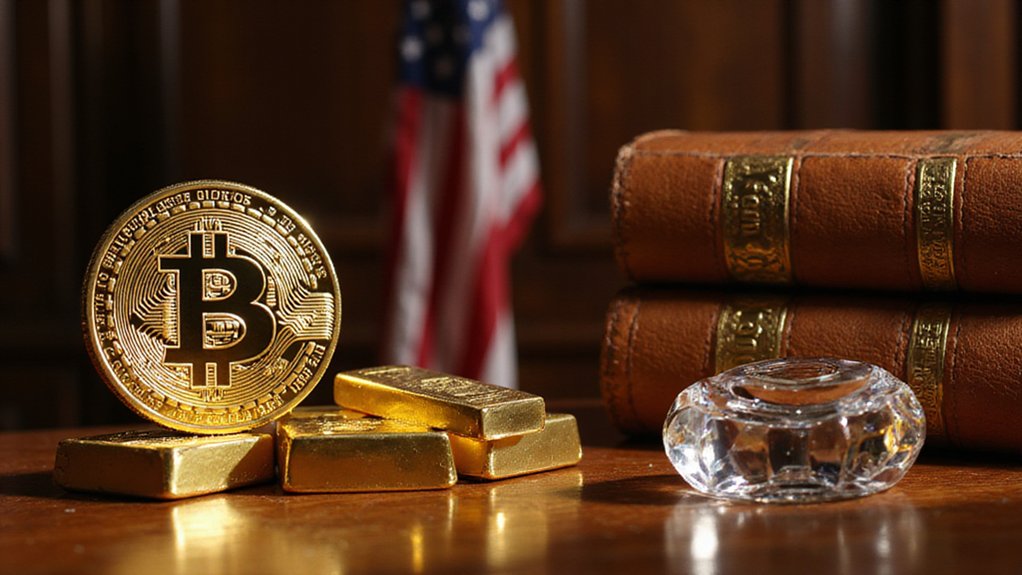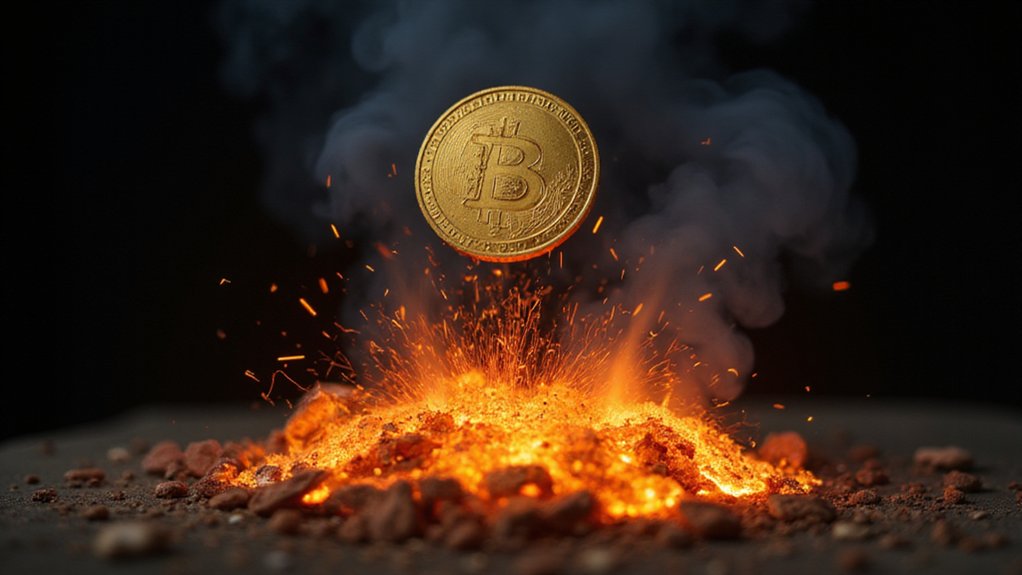World Liberty Financial, launched in 2024, positions itself as a decentralized banking alternative with the Trump family at its helm. Despite raising over $550 million through WLFI token sales, critics note the family retains 75% of proceeds while offering token holders merely voting rights—no economic benefits. With Donald Trump as “chief crypto advocate” and Barron as “DeFi visionary,” this venture’s stablecoin operates across multiple blockchains while its governance structure raises questions about how “decentralized” this financial revolution truly is.

In an ambitious foray into the often-bewildering domain of decentralized finance, World Liberty Financial emerged in 2024 as a DeFi protocol with a distinctly political pedigree.
With Donald Trump as “chief crypto advocate,” his son Barron as “DeFi visionary,” and his other sons serving as “Web3 ambassadors,” the Delaware-based entity presents itself as the vanguard of a financial revolution—though one might reasonably question whether the revolution extends beyond the Trump family’s revenue streams.
The platform’s purported mission centers on creating a decentralized crypto banking system that eliminates traditional intermediaries, therefore enhancing financial accessibility and reducing transaction costs.
Users can theoretically borrow, lend, and invest in digital assets without the encumbrance of conventional banking infrastructure—a compelling proposition for those disillusioned with legacy financial systems.
Governance of this nascent ecosystem operates via WLFI tokens, which grant holders voting rights but, significantly, no economic benefits.
These nontransferable tokens—a feature ostensibly designed to discourage speculation—have nonetheless generated over $550 million in sales by mid-2025.
Particularly, crypto entrepreneur Justin Sun invested at least $75 million, simultaneously assuming an advisory role while managing his own regulatory challenges.
The financial architecture of World Liberty Financial warrants particular scrutiny: the Trump family retains 75% of token sale proceeds and 60% of operational revenue, while allocating only a fraction of raised capital to actual platform development.
Follow the money: 75% of sales and 60% of revenue flow to the Trumps while platform development receives mere crumbs.
This arrangement—decentralized in theory but centralized in benefits—has predictably attracted criticism regarding both the project’s innovative merits and its governance integrity.
Indeed, despite substantial fundraising success, WLF has yet to launch fully functional operations, prompting industry observers to question whether it represents a genuine attempt to revolutionize financial services or merely leverages existing DeFi infrastructure to monetize political capital.
The venture released its USD1 stablecoin in March 2025, backed by U.S. treasuries and designed to maintain parity with the dollar.
The stablecoin operates on multiple blockchains including Ethereum and Binance Smart Chain, with BitGo providing institutional custody of its reserve assets.
The project’s founder transition from initial leaders Zak Folkman and Chase Herro to the Trump family in January 2025 marked a significant shift toward centralized control that contradicts fundamental DeFi principles.
The venture’s trajectory may ultimately determine whether it becomes a legitimate counterweight to traditional banking or simply another chapter in the curious intersection of politics, celebrity, and speculative finance.
Frequently Asked Questions
How Secure Is World Liberty Financial’s Blockchain Technology?
World Liberty Financial’s blockchain security presents a curious conundrum: despite ambitious claims, there’s a notable absence of published audits, technical documentation, or specified encryption protocols.
The framework relies heavily on partnerships and political branding rather than verified security measures.
While no breaches have been reported since its 2024 launch, this reflects its novelty more than proven resilience.
Without transparent validation processes or third-party security verification, investors face substantial unknowns regarding actual technological safeguards.
What Are the Minimum Investment Requirements?
World Liberty Financial implements a bifurcated entry system that would make any regulatory strategist proud.
U.S. participants must clear the accredited investor hurdle ($1M net worth excluding primary residence, or $200K/$300K individual/joint annual income).
Non-U.S. investors face a more lenient verification process without specified wealth thresholds.
No explicit minimum investment amounts are documented for WLFI purchases, though third-party platforms may impose their own thresholds (e.g., IDR 10,000 on certain exchanges).
All participants require KYC verification and web3 wallet connectivity.
How Does World Liberty Compare to Traditional Banking?
World Liberty Financial differs fundamentally from traditional banking through its decentralized structure.
While conventional banks operate as centralized intermediaries (with all the attendant regulatory oversight and consumer protections), World Liberty leverages blockchain technology to enable direct user control over assets, greater transparency, and potentially faster transactions.
This model eliminates certain institutional gatekeepers but introduces new challenges—smart contract vulnerabilities and regulatory uncertainty chief among them—while promising greater financial inclusion and reduced transaction costs.
Can I Access World Liberty Services Internationally?
World Liberty Financial appears designed for international accessibility through its decentralized architecture.
The platform’s core DeFi services—lending, borrowing, and USD1 stablecoin transactions—seem available across borders without explicit geographic restrictions.
However, KYC requirements for token purchases may create jurisdictional limitations, and regulatory compliance frameworks remain somewhat ambiguous.
While the whitepaper emphasizes democratizing financial access globally, specific details about country-by-country availability, banking integrations, and localized services remain conspicuously absent from their documentation.
What Happens if I Lose My Account Credentials?
Losing account credentials at decentralized platforms presents a paradoxical conundrum—the very security features protecting assets become formidable barriers to recovery.
Users typically undergo identity verification procedures (KYC verification being the standard, if somewhat intrusive, protocol) and must provide transaction records or wallet addresses as proof of ownership.
Unlike traditional banking’s centralized recovery mechanisms, decentralized platforms may offer limited recourse; hence the absolutely critical importance of securely backing up credentials and utilizing two-factor authentication from the outset.

